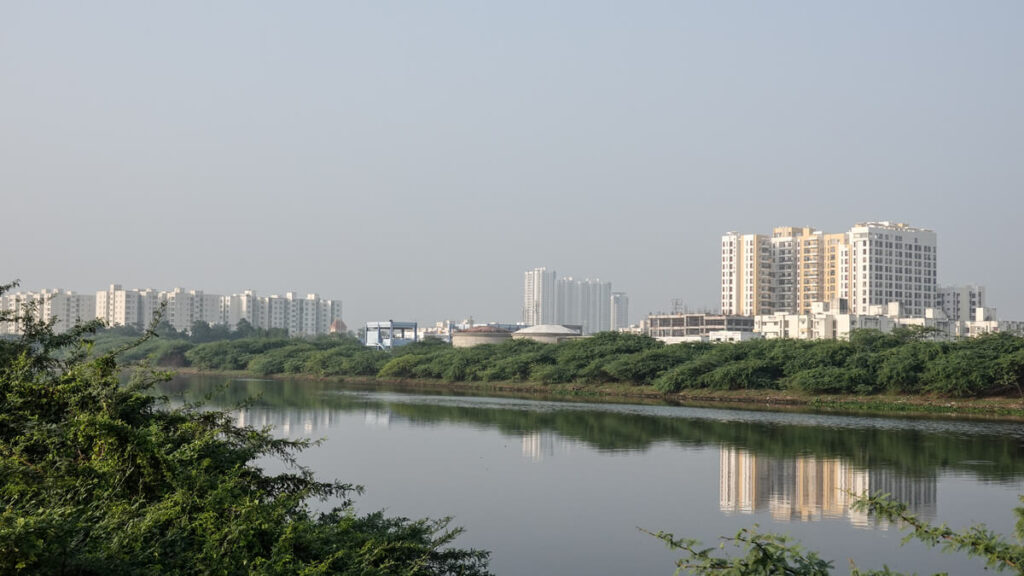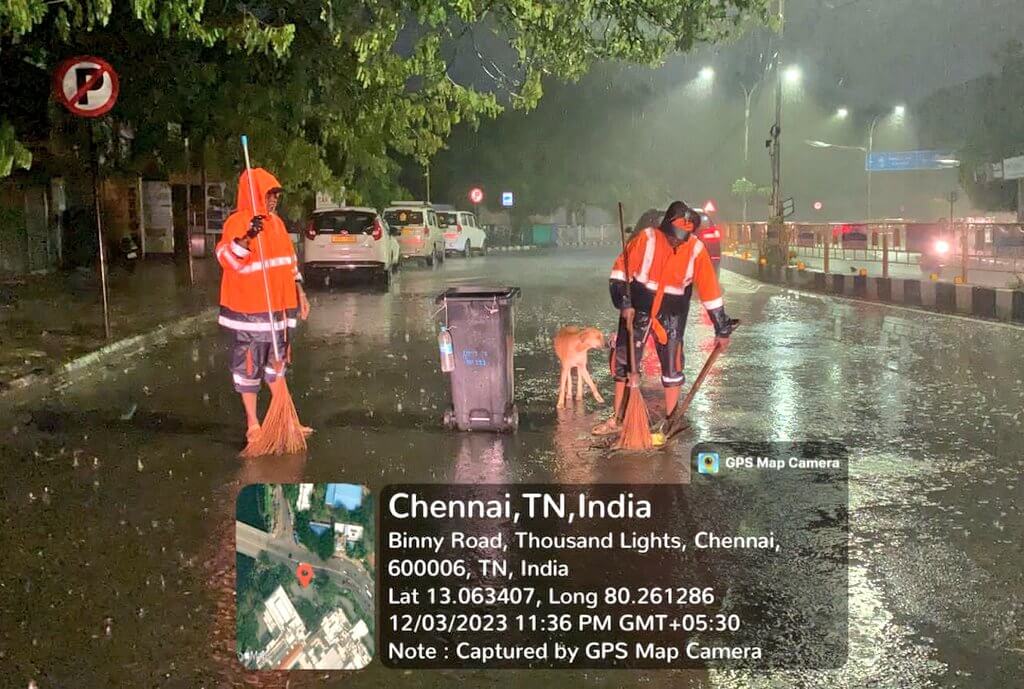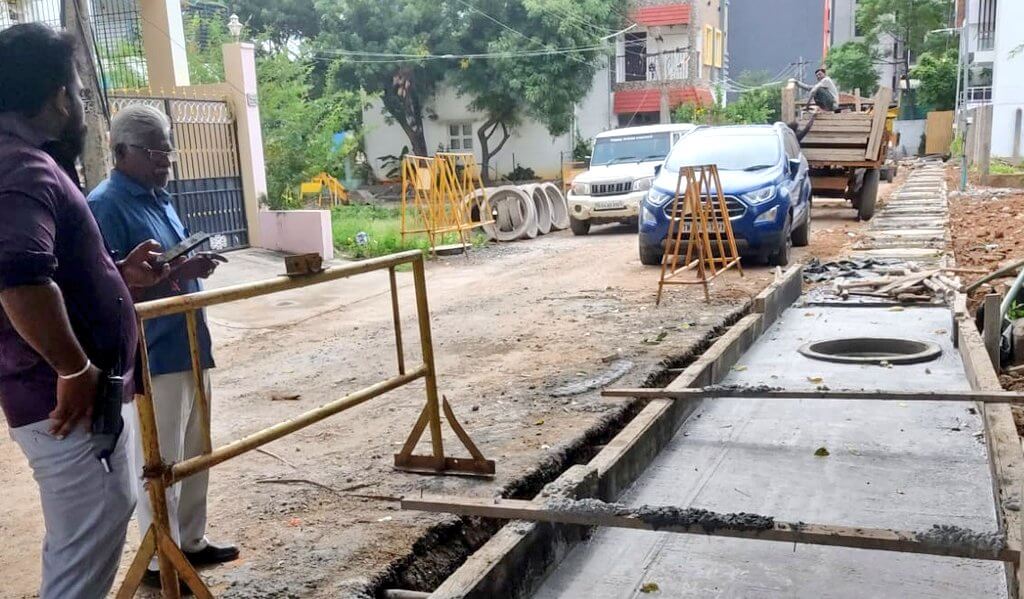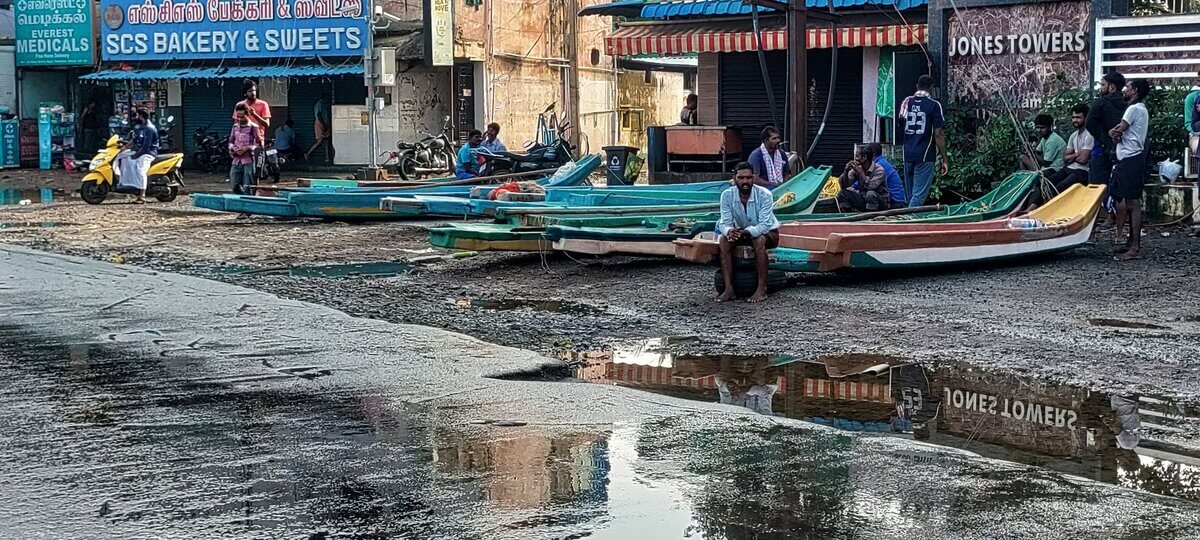Good morning, Chennai!
☁️ Today’s weather: Cloudy weather for the day.
🧐 Did you know? The Buckingham Canal initially ran from Madras to Ennore in 1801. It was then extended to Pulicat Lake. By 1857, the canal was then extended to Durgarayapatnam, 69 miles north of Madras.
🌊 Buckingham Canal the solution?

Could a wider Buckingham Canal help make South Chennai flood-proof?
What’s it about? As Cyclone Michaung hit Chennai, only 70% of the Buckingham Canal’s carrying capacity was available. With efforts to widen it stalled since 2010, the Water Resources Department (WRD) has proposed building channels to help water drain faster.
- The canal’s carrying capacity is 6,000 cusecs. This has decreased from its original depth of 6 feet to 2 feet below mean sea level. Rainwater exits the city through the canal to the city’s core and northern areas. The Pallikaranai Marshland’s flat terrain leads to slow drainage.
- The proposal is to build at least 10 channels perpendicular to the canal to help water drain faster into the sea. An example is a 1.9 km channel to Injambakkam Beach that would connect Okkiyam Madavu, which now flows into the canal.
Previous issues: Most of South Chennai depends on the canal to carry rainwater that drains into the Pallikaranai marshland. Civic officials couldn’t acquire land and remove encroachments to widen the canal. Many of the 200 lakes in South Chennai and the suburbs also need to be maintained.
🧹 Clearing the streets


Thousands of conservancy workers are engaged in flood relief even as their homes are flooded.
What’s it about? For the 12,000 conservancy workers engaged in clean-up operations in the aftermath of Cyclone Michaung, there’s no respite in sight. With insufficient equipment, they’ve been working round the clock to clear streets of debris.
- The Chennai Corporation has tasked over 12,000 workers, with thousands more brought in from other districts. Despite many of their homes also being affected, they’ve been tasked to clear garbage and debris from the streets.
- With many working with sewage and garbage, they’ve been dealing with health issues. They were provided food in the afternoons only after they threatened to stop work.
No additional compensation: The workers are on the job for 12 hours a day. While their normal shift is from 6 am to 2 pm, they’ve been working till 6 pm with no additional compensation.
🌊 Infrastructure money wasted?


As Chennai grapples with Cyclone Michaung’s aftermath, questions are being asked about why civic infrastructure failed again.
What’s it about? The Chennai Corporation and other departments have been busy cleaning up the streets of debris as water continues to recede in many areas. The focus is now on how and why the infrastructure failed again as the city suffered heavy rainfall. Despite over ₹2,000 crore spent on stormwater drains, it didn’t help that much.
- This year, an additional 879 km of stormwater drains were built. However, they didn’t prevent waterlogging. In Pattalam, for example, residents said the contractor failed to interlink the new drains.
- In some places, the situation was worse than in 2015 when some neighbourhoods didn’t flood. Residents from several localities said the civic body didn’t properly desilt drains which led to clogging.
What’s being done now? The state government has allocated ₹5,166 crore for stormwater construction across the city. The work was completed only in the core areas. The civic body is now focused on pumping out stagnated water and rescuing residents. The Metrowater will continue to desilt sewage pipelines.
🚣♂️ Fishermen to the rescue


As several localities went underwater, local fishermen sprung into action to help those stranded.
What’s it about? For many fishermen of the city, Cyclone Michaung was a deja vu of 2015. As the rains continued, the fisherfolk were ready for rescue operations. Many, having families and financial woes themselves, took their paddle boats to affected areas.
- 80 fishermen from Urur Kuppam, Odai Kuppam and Tiruvanmiyur Kuppam went to several neighbourhoods, including Thiruvanmiyur, Velachery, Pallikaranai, and Taramani. They organised themselves into 3-member teams armed with over 30 paddle boats.
- Battling rising water levels, sewage slush, and debris, they managed to rescue thousands of residents, saved patients in medical need, and helped deliver medicines and supplies.
Not for the money: For the fisherfolk, this wasn’t about the money. Many of the boats were damaged during the rescue operations. Repairing them will cost thousands of rupees. Without them, they can’t go fishing. They were promised ₹3,000 per boat as compensation but were paid only ₹1,000.
📊 Today’s Poll
(Only subscribers can participate in the polls)
Did you suffer any property damage due to the recent rains and floods?
- I did suffer property damage due to the recent rains and floods.
- I didn’t suffer property damage due to the recent rains and floods.
❓ Today’s Question
(Only subscribers can submit their answers)
What’s your favourite book you read this year?
Reply to this email with your answers.
🗞️ In other news…
- Property damage in Cyclone Michaung’s aftermath increases people’s financial burden.
- Private hospitals hold medical camps in the city for those affected by the cyclone.
- ₹6,000 as financial aid has been announced for every family affected by the floods.
- Tambaram Government Hospital resumed services despite debris on the ground floor.
- IIT Madras aims to remove language barriers by piloting courses in multiple Indian languages.
That’s it for today. Have a great day!
